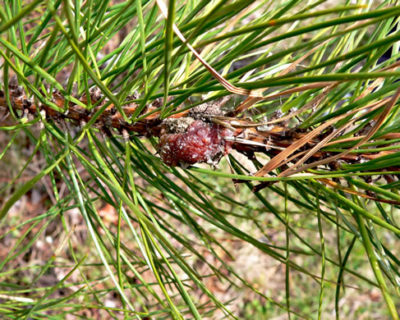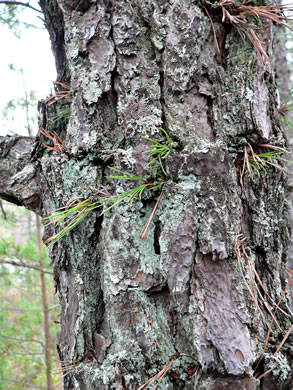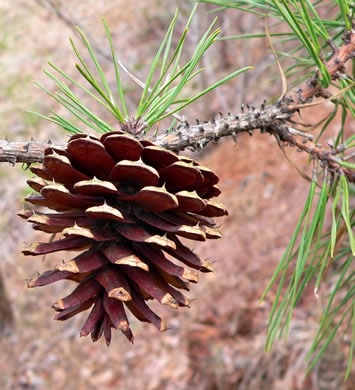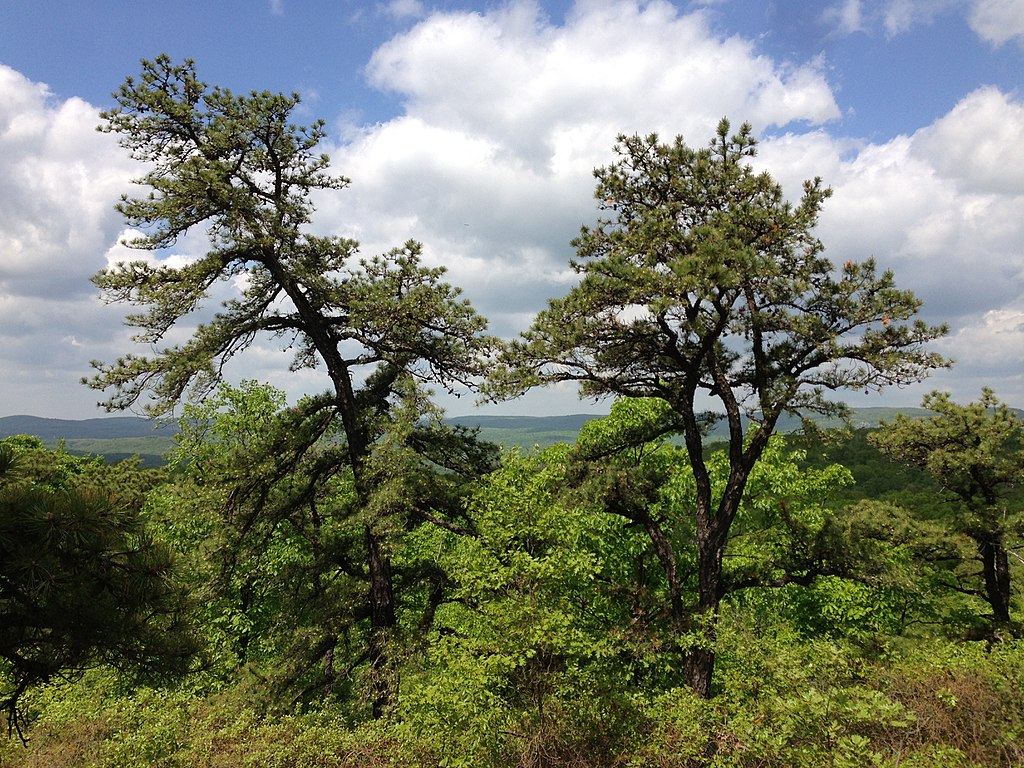Polk County’s Most Wanted – Pitch Pine
Have you seen Pitch Pine?
In a joint effort to expand the knowledge and understanding of the flora and fauna of Polk County, Conserving Carolina and botanist/ecologist David Campbell need your help in locating this month’s “Polk County’s Most Wanted—Plant,” Pitch Pine (Pinus rigida).
How can I distinguish Pitch Pine from other pines?
Pitch Pine is a medium to large-sized coniferous tree that is native to eastern North America, ranging from Ontario and Quebec to as far south as the mountains of South Carolina and Georgia. Pitch Pine may attain heights of just over 100 feet and have a diameter of slightly over two feet. Pitch Pine is unique among the Pines of our region in that it has stiff needles mainly in fascicles (bundles) of three.

Additionally, tufts of needles are often seen protruding directly out of the bark on the trunk of the tree. The bark on the main trunk of mature trees is rough and divided into many deeply furrowed channels.

The female cones are flat-bottomed and armed with stout prickles.

In our region, Pitch Pine is primarily confined to rocky ridges and other dry sites in the mountains and western Piedmont; it is most abundant in the mountains, particularly on sites that experience periodic fire. Occasionally, it may also be encountered in montane, acidic bogs. This is not a tree favored for lumber, as it does not typically grow with a straight, long trunk.
Pitch Pine is uncommon in Polk County, but there are several records of its occurrence here at higher elevation sites in the western parts of the county. As we progress from autumn into winter, keep a look out for Pitch Pine on dry, south-facing, rocky slopes.
What Can You Do?
If you think that you have seen Pitch Pine, please submit a photograph to Pam Torlina at Conserving Carolina by email at [email protected], so we can document its occurrence in Polk County.
For More Information
See more about “Polk County’s Most Wanted.” Download and print a “Pocket Guide” with all of the “Most Wanted” plants, animals, and habitats that you can be on the lookout for when you’re out in the field!
A Biological Inventory of Polk County
Now available for download: “An Inventory of the Significant Natural Areas of Polk County, North Carolina,” a culmination of David Campbell’s seven years in the field documenting the rare and significant flora and fauna in Polk County.
